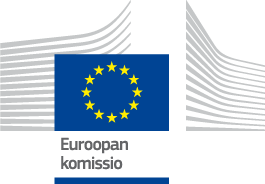

FLAG Factsheet
Unusually for Ireland, the FLAG area has a relatively strong urban structure with 22 settlements falling into the aggregate urban area category of over 1,500 inhabitants (14 of which are at close proximity to the coast).
The main harbours are Wicklow, Arklow, Wexford, Rosslare Kilmore Quay, Dunmore East, and Helvick.
Both Dunmore East and Kilmore Quay appear in the top five ports in Ireland by value with overall landings to these ports of 10 ,978 tonnes (value of €16.2m) and 4 ,437 tonnes (value of €15.6m) respectively (SFPA 2015 landings data).
The main inshore fisheries are crustaceans and shellfish including lobster, crab, whelk, shrimp, scallop, razor and surf clams, but other important inshore fisheries include netting, trawling and line fishing for whitefish, herring, sprats and mackerel.
Aquaculture is also important in the region worth (€19 million), species produced include bottom culture mussels (Wexford harbour and Waterford Estuary), and gigs oysters (Dungarvan Bay, Waterford Estuary and Bannow Bay).
Challenges in the area include an ageing population and the struggle to get younger people into the fishing industry.
There are 43 Natura 2000 protected sites here, comprising 26 Special Areas of Conservation (SACs), 16 Special Protection Areas (SPAs) and 1 Natural Heritage Area (NHA). Most Natura 2000 sites are found along the Co. Wexford coast.
The three nature reserves include; Ballyteigue Burrow Nature Reserve, The Raven Nature Reserve and the Wexford Wildfowl Nature Reserve.
The five Ramsar sites are; Bannon Bay, The Raven and Wexford Wildfowl Reserve in Co. Wexford and Tramore Backstrand and Dungarvan Harbour in Co. Waterford.
The strategy is set out under the following five themes:
National
The FLAG will co-operate with other funding sources such local authority funds, where key infrastructural projects are identified.
The South East FLAG had its first call for projects in March 2017. Below are ideas for projects that were received during its strategy consultation:
At least one call for projects is envisaged every year, opening in February and closing in March. Additional calls may take place when the budget remains unspent.
The FLAG South East had its first call for projects in March 2017. Below are ideas for projects that were received during its strategy consultation:
The FLAG overlaps with three LEADER areas. The LAGs and the FLAG do not share the same legal structure but the FLAG shares board members with each of the three which allows the groups to coordinate some of their activities.
The membership includes representatives from local authorities, the local LEADER programme, local third level institutes, community groups and fisheries organisations.